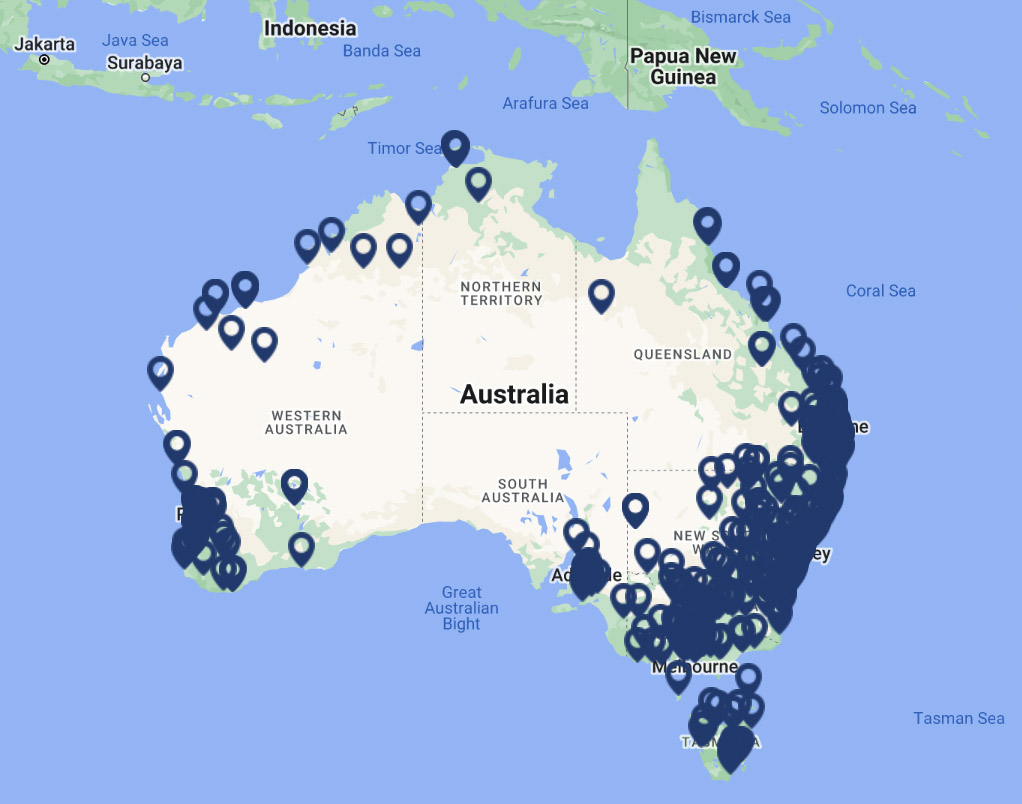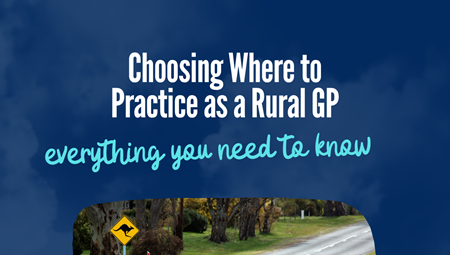If you’re a Vocationally Registered General Practitioner (VR GP) exploring your next opportunity, there’s never been a better time to work in Australia.
In 2025 we continue to see ongoing GP shortages across both metropolitan and regional areas. VR GPs are in exceptionally high demand, offering a wide range of rewarding, flexible, and well-paid roles nationwide.
In this guide, we’ll cover everything you need to know about VR GP jobs in Australia, from demand and benefits to locations, salary expectations, and how to take the next step in your career.
What Is a VR GP?
A Vocationally Registered GP (VR GP) is a doctor who has completed specialist general practice training and gained Fellowship with either the RACGP (Royal Australian College of General Practitioners) or ACRRM (Australian College of Rural and Remote Medicine).
This status recognises you as a fully qualified GP specialist and allows you to access Medicare’s A1 rebates, meaning higher billings and increased earning potential compared to non-VR doctors.
Put simply, being VR gives you greater professional freedom, financial rewards, and long-term stability.
The Demand for VR GPs Across Australia
The demand for VR GPs continues to outpace supply. According to the Royal Australian College of General Practitioners, Australia could face a shortfall of more than 5,000 GPs by 2032.
This shortage is especially acute in regional and remote areas, where many communities rely on a small number of dedicated GPs to provide essential care.
However, even in major cities like Sydney, Brisbane, Melbourne, Adelaide, and Perth, clinics are expanding and seeking experienced VR GPs due to population growth and increased patient demand.
Benefits of Working as a VR GP
Working as a VR GP in Australia offers a wide range of professional, financial, and lifestyle benefits, including:
1. Higher Earning Potential
One of the key benefits of becoming a Vocationally Registered (VR) GP is access to Medicare’s A1 rebates, which allows you to earn significantly higher billings than non-VR doctors.
On average, VR GPs in Australia earn between $250,000 and $400,000+ per year, depending on factors such as location, billing model, hours worked, and patient volume.
Most GPs work as independent contractors, which provides greater flexibility and potential to optimise income for tax purposes, along with increased clinical freedom and control over your schedule.
However, working as a contractor also means you’re not entitled to employee benefits such as sick leave, holiday pay, or superannuation contributions (unless you arrange these privately).
Some employers, including Aboriginal Medical Services (AMS) and a small number of private providers, do offer employee contracts, which include entitlements such as salary packaging, paid leave, and superannuation.
Regardless of your arrangement, it’s essential to carefully review your Service Agreement or Employment Contract before signing. Pay particular attention to any restraint of trade clauses, which can restrict your ability to work within a certain distance or timeframe if you choose to leave the practice. This is especially important if you plan to stay in the same local area.
2. Greater Flexibility & Freedom of Location
Whether you’re a local graduate or an international doctor moving to Australia, your eligibility to access Medicare, and therefore where you can work, is determined by Section 19AA and Section 19AB of the Health Insurance Act 1973.
These two regulations are key to understanding your pathway to unrestricted GP practice in Australia.
What Is Section 19AA?
Section 19AA applies to Australian medical graduates and permanent residents or citizens who obtained their primary medical qualification in Australia or New Zealand after 1 January 1997. Section 19AA ensures that doctors practising in Australia are vocationally recognised before they can bill Medicare.
Under this rule, to be eligible for a Medicare provider number, doctors must either:
-
-
-
- Hold Fellowship with the RACGP or ACRRM, or
- Be enrolled in an approved training program leading to Fellowship
What Is Section 19AB? (The 10-Year Moratorium)
Section 19AB, also known as the 10-year moratorium, applies to overseas-trained doctors and foreign graduates of accredited Australian medical schools.
It restricts these doctors from providing Medicare-rebatable services unless they work in a Distribution Priority Area (DPA), locations often found in regional, rural, and outer metropolitan Australia. It’s important to note that 19AB relates to a doctor’s residency status, not their level of registration.
To be covered by 19AB, a doctor must:
-
-
-
- Be registered with AHPRA, and
- Be a permanent resident or Australian citizen
Reducing the 10-Year Moratorium
Doctors can reduce their moratorium period by working in more rural or remote areas, based on the RA (Remoteness Area) classification of their practice location. The more remote the area, the faster the moratorium reduction.
This provides a strong incentive for doctors to explore rural GP opportunities while progressing toward unrestricted practice.
Learn more about moratorium scaling on the Department of Health website.
3. Work-Life Balance
Australia’s GP workforce culture places high value on lifestyle. Many clinics offer flexible hours, part-time arrangements, and family-friendly rosters, allowing you to enjoy more time for travel, family, and recreation.
4. Diverse Clinical Opportunities
As a VR GP, you can expand your scope across areas like skin cancer, chronic disease, women’s health, aged care, or procedural work. Many VR doctors also take on teaching, supervision, and medical leadership roles.
5. Attractive Incentives & Relocation Support
To attract and retain VR GPs, especially in regional or rural areas, many practices offer sign-on bonuses, relocation assistance, accommodation packages, guaranteed income periods or increased percentages for the first few months.
Where Can VR GPs Work?
As a Vocationally Registered (VR) GP, you have the flexibility to work across Australia in a wide range of practice settings, from major metropolitan clinics to regional centres and remote communities. Your choice of location can influence not only your lifestyle, but also your income potential, incentives, and access to programs such as moratorium scaling and rural support initiatives.
Modified Monash Model (MMM)
The Modified Monash Model (MMM) is used by the Australian Government Department of Health and Aged Care to classify areas based on their level of rurality and remoteness. This classification helps determine eligibility for programs, incentives, and workforce schemes designed to attract doctors to regional and remote areas.
The scale ranges from MMM1 (major cities) to MMM7 (very remote communities):
- MMM1 – Metropolitan areas
- MMM2 – Regional centres
- MMM3 – Large rural towns
- MMM4 – Medium rural towns
- MMM5 – Small rural towns
- MMM6 – Remote communities
- MMM7 – Very remote communities
Doctors working in MMM3–MMM7 locations may be eligible for financial incentives, relocation grants, and moratorium scaling, allowing them to reduce their 10-year restriction period under Section 19AB.
You can check the MMM classification of any town or suburb using the official Health Workforce Locator on the Department of Health and Aged Care website.
MMM and DPA: How They Work Together
While the MMM model defines how rural or remote an area is, the Distribution Priority Area (DPA) classification determines whether a location is eligible for Medicare-rebatable GP services by overseas-trained doctors and foreign graduates of accredited Australian medical schools under Section 19AB.
In simple terms:
- MMM = measures remoteness
- DPA = determines eligibility for restricted doctors to work
Metropolitan Practices (MMM1)
- High patient demand in growing suburbs of Sydney, Brisbane, Melbourne, Adelaide, Canberra and Perth.
- Opportunities in private and mixed billing clinics, often with long-term stability and strong income potential.
Regional & Rural Communities (MMM2-7)
- Areas like the Goldfields (WA), Gippsland (VIC), Bundaberg (QLD), Riverina (NSW), and Barossa (SA) are experiencing significant GP shortages.
- Practices also often offer housing support, and relocation bonuses.
- Rural GPs enjoy a broader clinical scope and close community ties.
Aboriginal Medical Services (AMS)
- Rewarding roles delivering culturally appropriate care and improving Indigenous health outcomes.
- Strong team support and opportunities for professional growth.
Locum & FIFO GP Jobs
- Flexible short-term or fly-in/fly-out contracts across regional Australia.
- Excellent pay rates (often $1,800–$2,500+ per day) and full travel/accommodation provided.
- Locum exemptions allow VR GPs who are still under the moratorium to work in a non-DPA location for up to six months. This exemption can only be used once per practice, meaning you cannot return to the same clinic for another locum period under the same exemption.
How to Secure a VR GP Role in Australia
- Complete Your Fellowship (FRACGP or FACRRM) and apply for vocational registration with AHPRA.
- Decide on Your Ideal Location: Are you seeking coastal lifestyle, rural variety, or city living?
- Research Practice Models: Understand differences between bulk billing, mixed billing, and private billing clinics.
- Work With a Specialist Recruiter: At DXC Medical, we partner with over 2,000 practices nationwide to connect VR GPs with roles that match their goals, skills, and lifestyle preferences.
Considering Your Next Move?
If you’re a VR GP looking for new opportunities across Australia, DXC Medical can help.
We specialise in permanent and locum GP placements, with consultants based in all major capital cities, DXC Medical offers genuine local insight and on-the-ground support. Our team understands the unique character of each community, from its schools and suburbs to transport links and healthcare networks. This local expertise helps us match doctors and practices more effectively, ensuring every placement is not only professionally rewarding but also a great lifestyle fit for you and your family.
Contact DXC Medical
Get in touch with one of our consultants to discuss your GP career options or practice recruitment needs.
With consultants based in all major Australian cities, we provide personalised, local support wherever you are in Australia.
MELBOURNE | SYDNEY | CANBERRA | ADELAIDE | BRISBANE | PERTH | LOCUM

![MRCGP (CCT) vs MRCGP [International]: What’s the Difference? Image](/media/m2gn0cxi/mrcgp-cct-vs-mrcgp-international-what-s-the-difference.png?center=0.27105476906082088,0.49377020769149338&mode=crop&width=450&height=255&rnd=134062120076530000)
